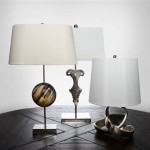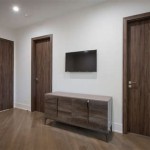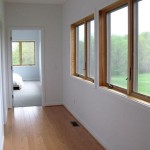Interior Design Decorating Ideas: Transforming Your Space
Interior design is the art and science of enhancing the interiors of buildings to achieve a healthier and more aesthetically pleasing environment for the occupants. It involves various aspects, including space planning, furniture selection, color schemes, lighting, and material choices. When planning interior design, it is important to consider the overall style, functionality, and budget. Transforming your space into a stylish and inviting sanctuary is a rewarding endeavor, and it starts with embracing these fundamental decorating ideas.
Understanding Your Style
Before embarking on any decorating project, it is crucial to define your personal style. What kind of atmosphere do you envision for your space? Are you drawn to minimalist aesthetics, classic elegance, bohemian vibes, or something else entirely? Explore various design magazines, websites, and social media platforms to gather inspiration and identify your preferences. Consider the following questions:
- What colors and textures do you find appealing?
- What kind of furniture do you gravitate towards?
- Do you prefer natural materials, modern finishes, or a blend of both?
- What are your favorite design elements, such as artwork, textiles, or lighting?
Once you have a clear understanding of your personal style, you can start narrowing down your decorating choices. Remember, it is perfectly acceptable to combine elements from different styles to create a unique and personalized look.
Creating a Focal Point
Every room needs a focal point, a central element that draws the eye and sets the overall tone. This can be a statement piece of furniture, a stunning artwork, a fireplace, or even a well-designed architectural feature. The focal point should be the most prominent element in the room, and the rest of the décor should complement it. For example, if your focal point is a vibrant patterned rug, choose furniture and accessories in coordinating colors and patterns.
When selecting a focal point, consider its size, shape, and color in relation to the overall dimensions of the room. It should be large enough to be noticed but not overpowering. The focal point should also create a sense of balance and harmony within the space.
Playing with Color
Color is perhaps the most powerful tool in interior design. It can evoke emotions, create illusions, and define the ambiance of a room. When choosing colors, consider the following:
-
The size of the room:
Lighter colors make small spaces feel larger, while darker colors can make larger spaces feel more intimate. -
The amount of natural light:
Rooms with plenty of natural light can handle bolder colors, while rooms with limited light may benefit from softer, neutral tones. -
The desired mood:
Soothing colors, such as blues and greens, create a calming atmosphere. Energizing colors, such as reds and yellows, can stimulate creativity and conversation.
A well-balanced color palette is essential for creating a cohesive and visually appealing space. You can use a color wheel to explore complementary and analogous color combinations. For example, a room with a neutral base can be accented with pops of color in furniture, artwork, or textiles. Don't hesitate to experiment with different shades and hues until you find the perfect color combinations for your space.
Lighting Techniques for Impact
Lighting plays a crucial role in interior design, influencing the mood and functionality of a space. It can highlight architectural features, create intimacy, and enhance the beauty of furnishings. A well-designed lighting scheme utilizes a combination of ambient, task, and accent lighting.
-
Ambient lighting
provides general illumination for the entire room. It can be achieved through overhead fixtures, such as chandeliers, recessed lights, or ceiling fans with integrated lights. -
Task lighting
provides focused illumination for specific activities, such as reading, working, or cooking. Table lamps, floor lamps, and under-cabinet lighting are all examples of task lighting. -
Accent lighting
highlights specific features, such as artwork, sculptures, or architectural details. It can also create a sense of depth and intrigue. Track lighting, spotlights, and sconces are commonly used for accent lighting.
The type of light bulbs used can also significantly impact the overall feel of a room. Warm white bulbs create a cozy and inviting ambiance, while cool white bulbs provide a more clinical and energetic feel.
100 Home Decor Ideas The Ultimate Inspiration For Interior Designers
80 Gorgeous Living Room Decorating Ideas For Every Style
Latest Interior Design Ideas For Your Home Decor Wooden Street
How To Design A Room Like An Interior Designer Step By Greenhouse Studio
Home Decorating Ideas On A Budget Designcafe
Top 12 Minimalist Home Decor Ideas For A Simplified Look Decorilla Interior Design
15 Best Modern Interior Design Ideas Of 2025 Decorilla
80 Gorgeous Living Room Decorating Ideas For Every Style
7 Home Decorating Essentials To Elevate Your Decor Shabbyfufu Com
100 Home Decor Ideas The Ultimate Inspiration For Interior Designers








